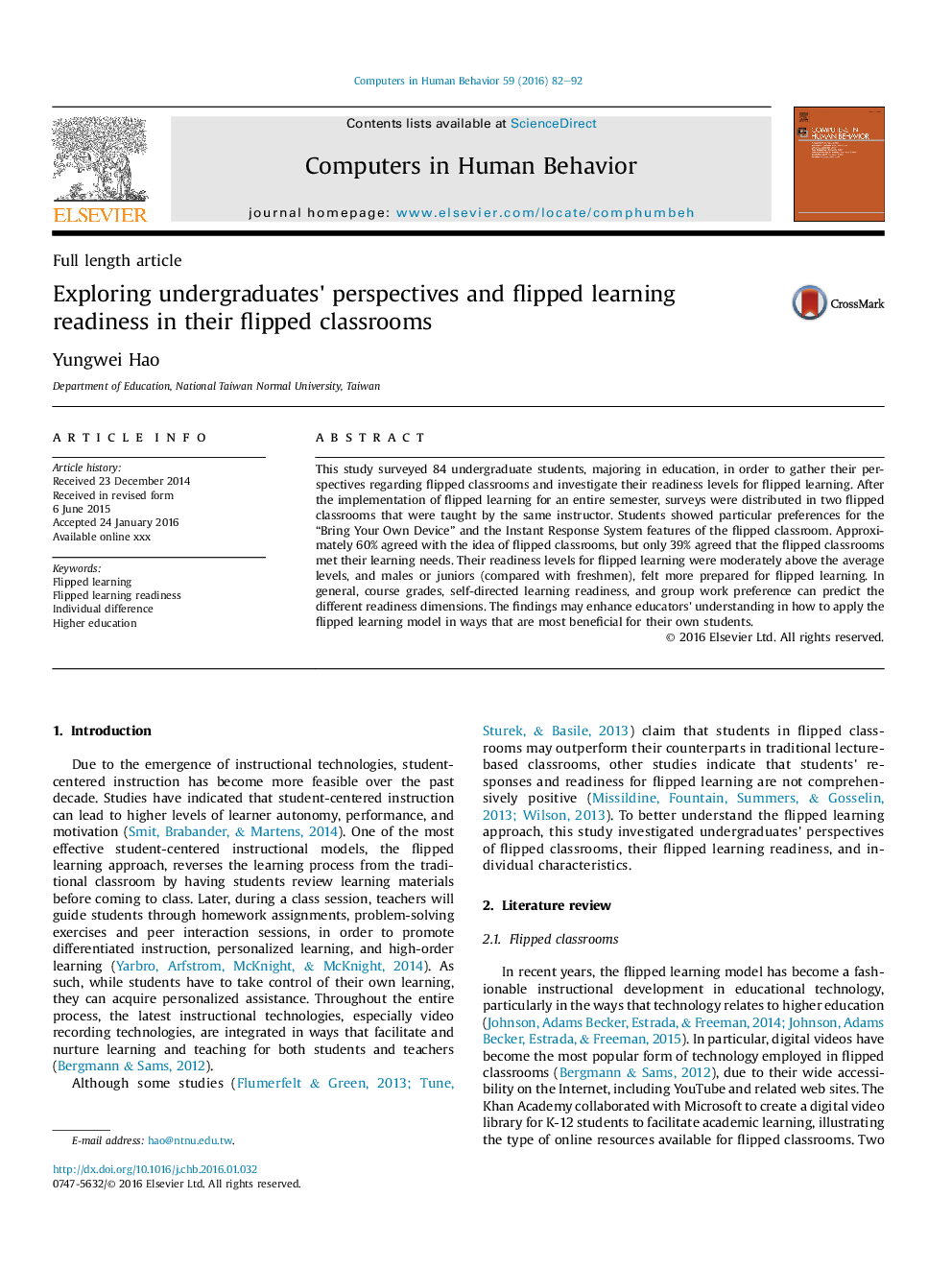| Article ID | Journal | Published Year | Pages | File Type |
|---|---|---|---|---|
| 6837385 | Computers in Human Behavior | 2016 | 11 Pages |
Abstract
This study surveyed 84 undergraduate students, majoring in education, in order to gather their perspectives regarding flipped classrooms and investigate their readiness levels for flipped learning. After the implementation of flipped learning for an entire semester, surveys were distributed in two flipped classrooms that were taught by the same instructor. Students showed particular preferences for the “Bring Your Own Device” and the Instant Response System features of the flipped classroom. Approximately 60% agreed with the idea of flipped classrooms, but only 39% agreed that the flipped classrooms met their learning needs. Their readiness levels for flipped learning were moderately above the average levels, and males or juniors (compared with freshmen), felt more prepared for flipped learning. In general, course grades, self-directed learning readiness, and group work preference can predict the different readiness dimensions. The findings may enhance educators' understanding in how to apply the flipped learning model in ways that are most beneficial for their own students.
Related Topics
Physical Sciences and Engineering
Computer Science
Computer Science Applications
Authors
Yungwei Hao,
